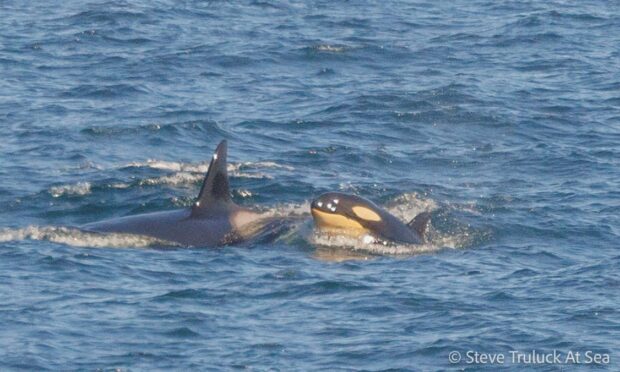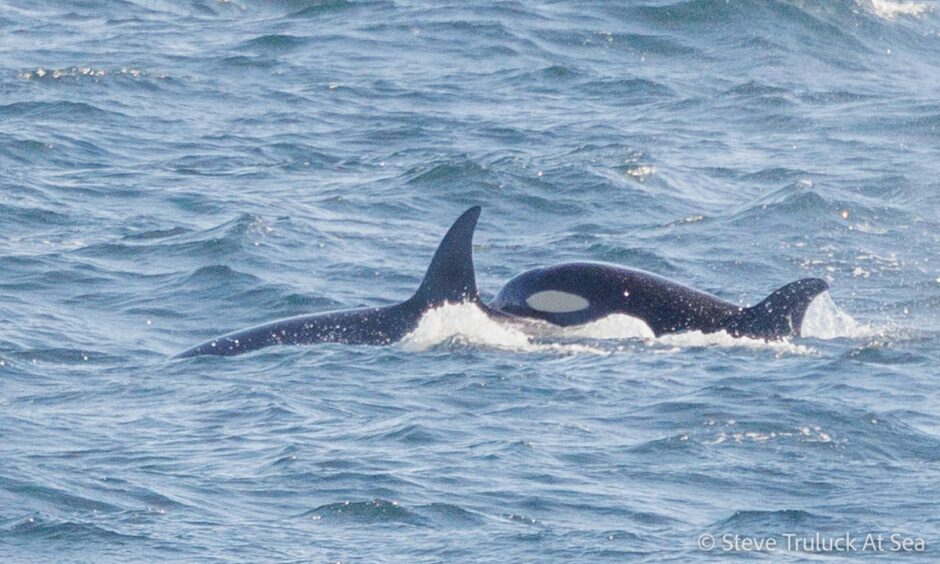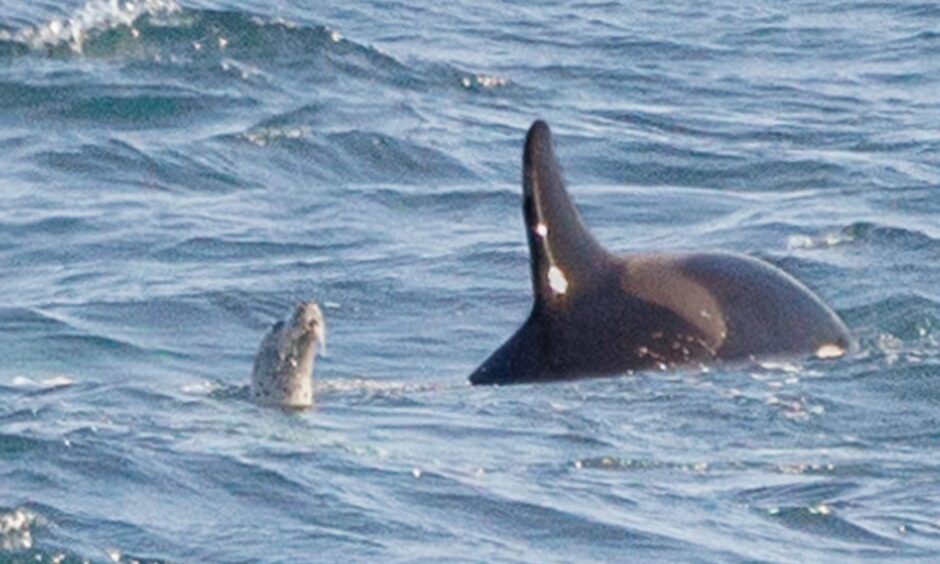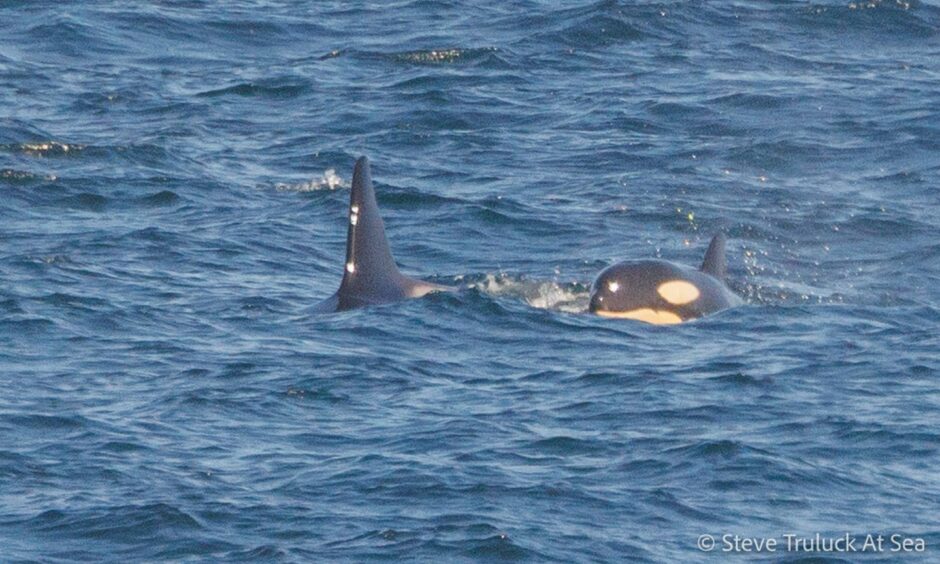A pod of killer whales has been spotted off the coast of Fraserburgh, including a newborn baby, to the delight of killer whale enthusiasts.
The pod was spotted near Kinnaird Head, Fraserburgh, and is known via the matriarch’s identification number, which is 169. This group is known as the “169s”.
Killer whales, also known as orca, often travel in groups and this pod contains at least five mammals, including two mothers and their babies.
Killer whale 170 was the first in the group to have her baby last year when first spotted in 2021.
This was followed by an orca designated 169, which just delivered her baby this year.
Many pods travel between Iceland and Scotland throughout the year, coming into Scottish waters for food from May until August.
Killer whale enthusiast Steve Truluck travelled from Moray to Fraserburgh after hearing they were in the area.
Pod includes two mothers and their calves
Mr Truluck said: “At this time of year, we get extra killer whales coming from Iceland into Scottish waters. There are quite a few of us looking out for these killer whales in and around Fraserburgh.
Short lunchtime trip along the coast. Fantastic to see spy-hopping and two orca calves going nose to nose. Fairly sure it's the 169's pod.😍 #Orca #Aberdeenshire #Fraserburgh pic.twitter.com/zSD5q2VLJM
— Mountains of Scotland (@mtnsofscotland) May 9, 2022
“When I saw there was a pod of killer whales coming down from John O’Groats on Thursday, I was very excited, so I headed across to Fraserburgh to intercept the killer whales.”
Mr Truluck arrived on Friday, May 6, but was too late to see the creatures, however, at around 7.45am on May 7, he was in luck as the pod had returned.
He understood how the killer whale got its name as he witnessed the group prey on several seals in the water.
Staples of the orca diet include plankton and seals, which is why they come to Kinnaird Head, known for its local seal population.
As well as being an enthusiast, Mr Truluck has also co-authored a killer whale catalogue that documents sightings of the creatures for other enthusiasts across Scotland.
It is important to record the sightings of Orcas to understand their behaviour and what challenges they face when they travel to Scotland in search of food.
ORCA 😍😍😍 Seen off Fraserburgh today #Orca pic.twitter.com/YtMIq3Iwj0
— Kate (@KateSto16564560) May 7, 2022
Mr Truluck hopes to expand the network of enthusiasts via social media, adding that he was initially the only one to see them, so he put the word out.
The news drew several other keen whale spotters out, and luckily the pod returned after travelling west to Rosehearty.
Mr Truluck noted that the killer whales have been spotted in Fraserburgh three times so far, the first being by a local, Shaun Sim, who gave him information on where to them.
Pollution risk in Scottish waters
Preying on animals such as seals pose a danger to killer whales due to polychlorinated biphenyls (PCB).
Mr Truluck said: “One of the major challenges facing killer whales is PCB pollution in Scottish waters.
“Seals eat fish, which contain persistent pollutants, so the higher up the food chain you go, the higher the levels of pollution in food sources.
“Of course, right at the tip of the food chain are killer whales, so the animals that eat seals rather than fish are more susceptible to becoming contaminated with these pollutants.”
“There is a west coast community of killer whales who spend most of their time in the Hebrides, and there are only two of them left due to pollution and inbreeding.
“One of them died and was necropsied, where they found contamination levels in the animal to be 100 times the safe limit, so it is a huge problem in Scottish waters.”
To keep updated on the latest Orca sightings across the north-east click here.



